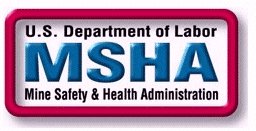 In a meeting earlier this month with the National Stone, Sand & Gravel Association (NSSGA), Assistant Secretary of Labor for Mine Safety and Health Joseph A. Main updated NSSGA's board of directors on recent actions taken by the Mine Safety and Health Administration (MSHA) to improve miner safety and health.
In a meeting earlier this month with the National Stone, Sand & Gravel Association (NSSGA), Assistant Secretary of Labor for Mine Safety and Health Joseph A. Main updated NSSGA's board of directors on recent actions taken by the Mine Safety and Health Administration (MSHA) to improve miner safety and health.
The NSSGA represents companies that produce more than 90 percent of the crushed stone and 70 percent of the sand and gravel consumed annually in the United States.
In his remarks, Main stated that mine safety has been on a steady path of improvement since the agency began implementing reforms in 2010, including the Rules to Live By initiative that focuses on the most common causes of mining deaths, impact inspections of problem mines, and the "Pattern of Violations" program targeting chronic violators. The latter initiative has resulted in improved compliance, reduced injuries and an 83 percent reduction in the number of chronic violators.
The industry as a whole achieved the lowest fatality and injury rates in the history of mining in 2011 and again in 2012, a trend that continued through FY 2013. From 2010 through 2013, there has been a 25 percent decrease in violations in the metal and nonmetal mining industry. Main noted, however, that in the last quarter of 2013, there were nine metal and nonmetal mining deaths, a trend that MSHA is working to reverse.
MSHA has worked with stakeholders to identify areas to improve compliance and miners' safety and health. The results have been positive. Outreach on guarding standards have resulted in a 40 percent improvement in compliance and, since the publication of a Program Policy Letter recognizing Occupational Safety and Health Administration standards on fall protection, fall protection violations have dropped 25 percent. MSHA also issued a policy letter recognizing OSHA's hazard communication standard and, just last month, rolled out a new ladder safety training tool..
Main noted also that MSHA completed nearly 100 actions based on recommendations identified by the internal review of the 2010 Upper Big Branch mine disaster; helped create the Holmes Mine Rescue Association; reformed coal, metal and nonmetal mine rescue training contests; improved enforcement of workplace safety discrimination cases; and significantly reduced the backlog of cases pending before the Federal Mine Safety and Health Review Commission, from a peak of more than 89,000 contested violations in 2010 to about 31,000 in 2013.


